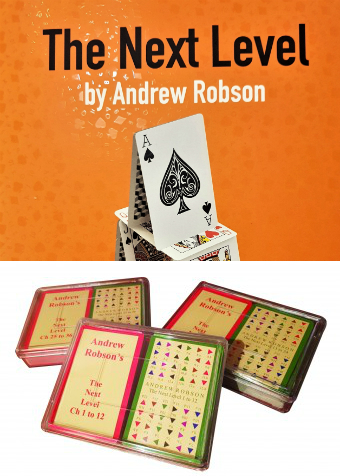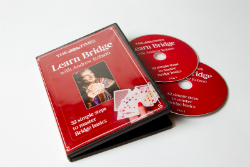
Book a Course
View all the latest courses going on at the bridge club and book yours now...Andrew:
Signal & Discard
The most important situation in which the suit preference signal operates is when you are leading a suit for partner to ruff
|
Dummy ♦ K Q J |
||
|
West ♦ 3 |
----------- ♥ trumps |
East (you) ♦ A 10 8 5 4 2 plus (i) ♠ A, (ii) ♣ A |
West leads ♦ 3 v the heart contract — surely a singleton. You win ♦ A and lead a second diamond, and partner duly ruffs. Partner returns...?
That’s the point. Partner doesn’t know what to return and is guessing between spades and clubs. Here’s where the suit preference signal comes into play. If you want the higher-ranking of the other two suits led back, you lead back ♦ 10; if you want the lower-ranking suit returned, you lead back ♦ 2. In (i), you lead back ♦ 10; in (ii), ♦ 2. In either case, partner leads back to your ♠ A/♣ A and you give partner a second diamond ruff.
It can get quite subtle, especially in expert circles. If you’re not sure what you want partner to return, lead back ♦ 5, the middle card. If you think you want a spade but you’re not sure, lead back ♦ 8; if you think you want a club but are not sure, lead back ♦ 4
|
Dummy ♥ K Q J |
||
|
West ♥ 4 |
----------- ♠ Trumps |
East (you) ♥ A 9 7 6 3 2 plus (i) ♣ A |
|
South Deals None Vul |
|
||||||||||||||||||||||||||||||
|
|
|
|||||||||||||||||||||||||||||
|
|||||||||||||||||||||||||||||||
| West | North | East | South |
| 1 ♠ | |||
| Pass | 2 ♥ | Pass | 3 ♥1 |
| Pass | 3 ♠ | Pass | 4 ♠ |
| All pass |
|
West was listening to the bidding. North-South had advertised eight hearts between them, leaving just one for East. At trick one, he led ♥ A, knowing he was voiding his partner. At trick two, he led ♥ 10, a suit preference signal for the higher-ranking diamonds (over clubs).
East ruffed and resisted the temptation to switch to ♣ K, rather leading a dutiful ♦ 2. West won ♦ A and led a third heart, East ruffing again. Down one.





